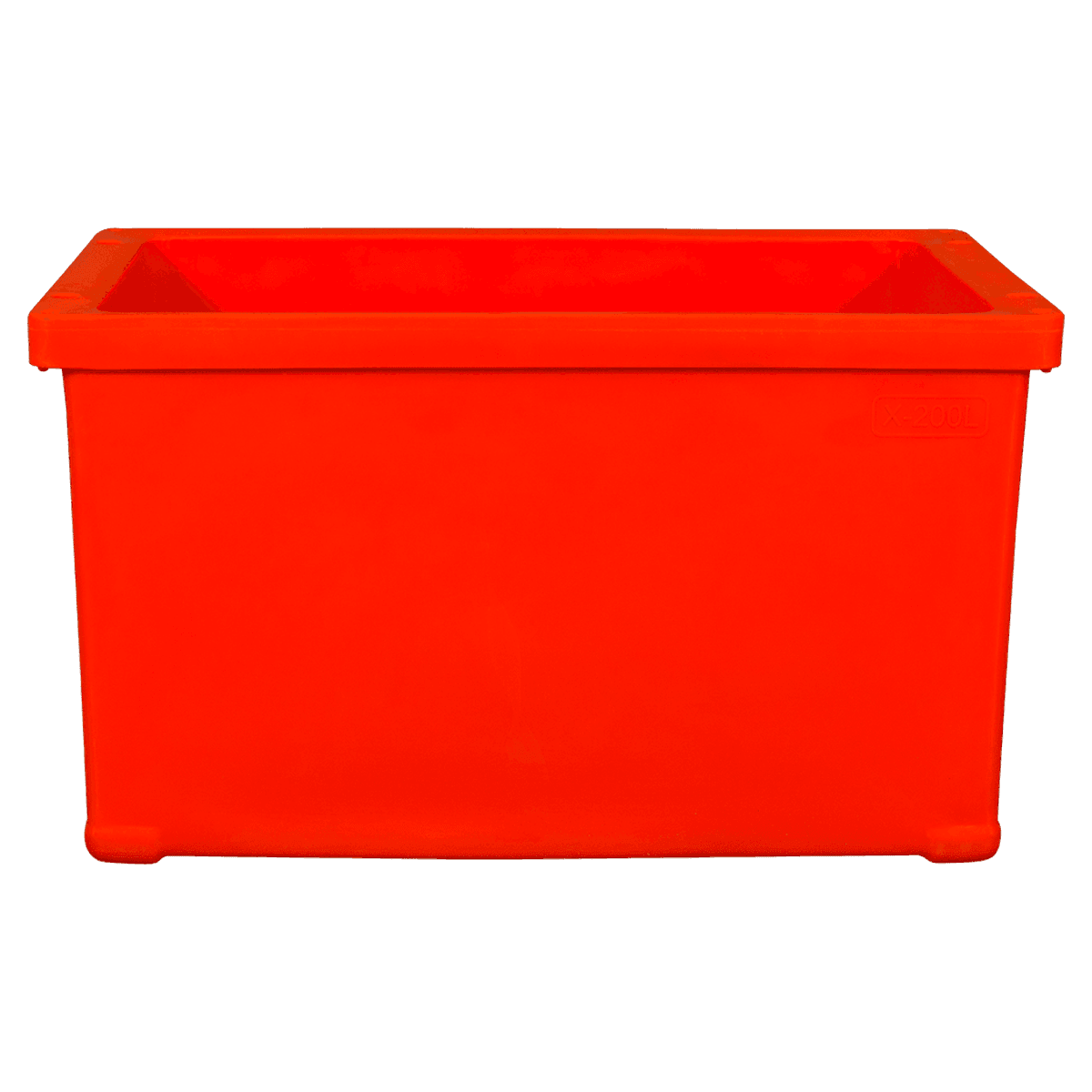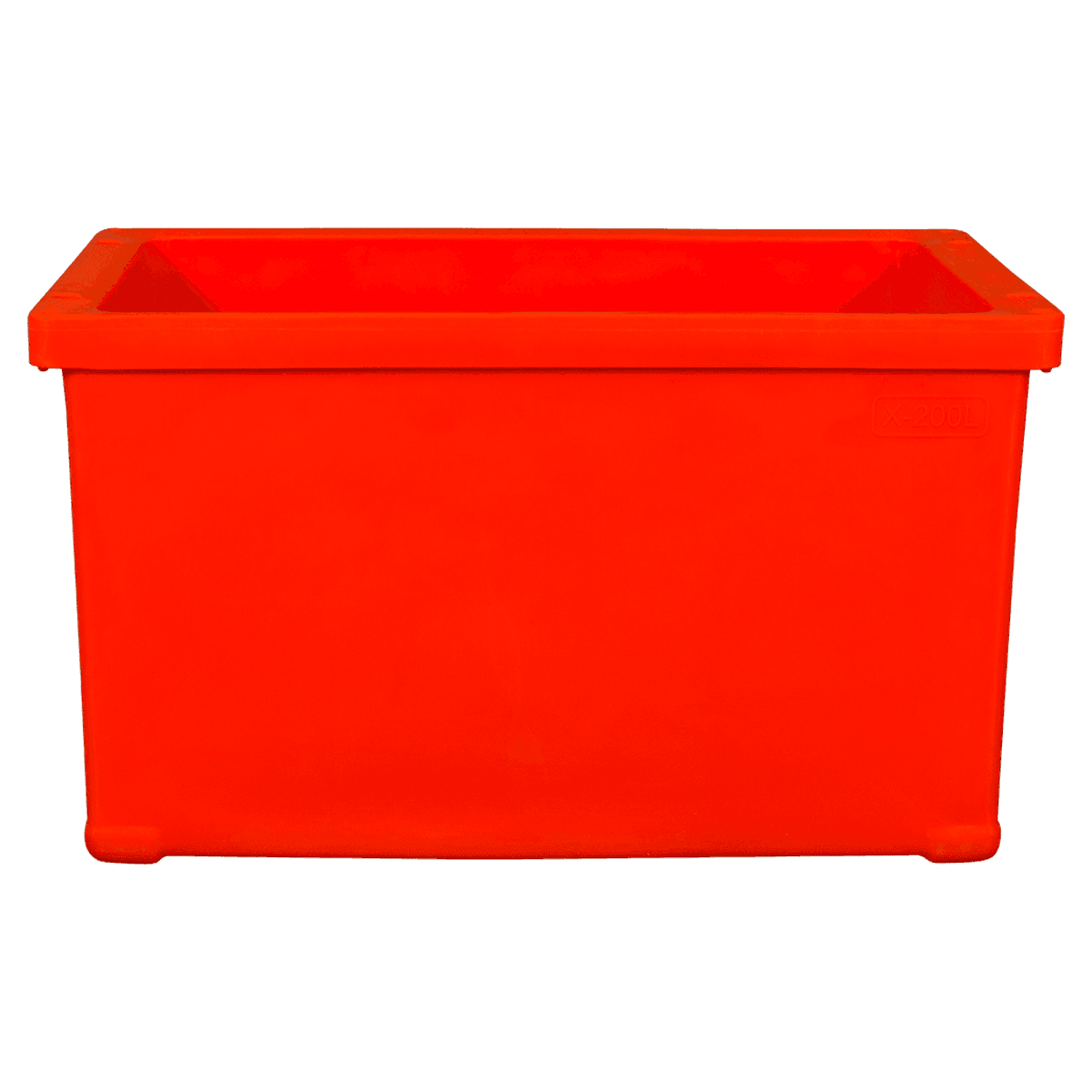1.Temperature Control: Insulated seafood containers serve as guardians of freshness by meticulously regulating and sustaining the ideal temperature required for seafood preservation. These containers are crafted with cutting-edge insulation materials that possess exceptional thermal resistance, effectively shielding the interior from external temperature fluctuations. By fostering a consistently cold environment within the container, insulated seafood containers mitigate the growth rate of spoilage-inducing microorganisms, such as bacteria and enzymes. This meticulous temperature control is particularly critical during the transportation and storage of seafood, where even minor temperature deviations can accelerate degradation and compromise quality. Whether harboring delicate fish fillets or succulent shellfish, insulated containers act as steadfast guardians, ensuring that seafood remains at optimal temperatures for prolonged periods, thereby extending its shelf life and preserving its freshness.
2.Thermal Insulation: At the heart of insulated seafood containers lies their unparalleled thermal insulation capabilities, engineered to shield delicate seafood from external thermal influences. These containers often boast a multi-layered design, incorporating advanced insulation materials like expanded polystyrene (EPS) foam or vacuum-insulated panels (VIPs). These insulating layers create a formidable barrier against heat transfer, effectively thwarting the intrusion of ambient warmth. By enveloping the seafood within a cocoon of cold, insulated containers impede the biochemical reactions that accelerate spoilage, ensuring that seafood retains its pristine quality and sensory attributes. Whether navigating sweltering summer temperatures or traversing frigid winter climates, the superior thermal insulation of these containers remains unwavering, safeguarding the delicate flavors and textures of seafood during transit and storage.
3.Moisture Regulation: In the realm of seafood preservation, moisture regulation is paramount to prevent microbial proliferation and preserve product integrity. Insulated seafood containers are equipped with moisture-resistant liners or coatings that create a moisture-controlled microclimate within the container. These liners effectively mitigate excess humidity, minimizing the risk of microbial growth and spoilage. By fostering a dry and controlled environment, insulated containers thwart the onset of mold, yeast, and bacterial contaminants, thereby extending the shelf life of seafood and maintaining its pristine quality. From succulent scallops to delicate lobster tails, each morsel is enveloped in a protective cocoon, shielded from the detrimental effects of moisture and humidity.
4.Hygienic Design: In the quest to preserve seafood freshness, hygienic design plays a pivotal role in mitigating contamination risks and ensuring product safety. Insulated seafood containers are meticulously engineered with smooth, non-porous surfaces that are inherently resistant to bacterial adherence and biofilm formation. This seamless construction minimizes crevices and fissures where microbial contaminants could proliferate, ensuring that seafood remains untainted and unspoiled. Additionally, some containers feature removable liners or trays, facilitating effortless cleaning and sanitization between uses. By upholding rigorous hygiene standards, insulated containers provide an impenetrable fortress against microbial intruders, safeguarding the purity and wholesomeness of the seafood stored within.
5.Airtight Seals: The integrity of seafood preservation hinges upon hermetic containment, achieved through the implementation of airtight seals in insulated containers. These containers are equipped with precision-engineered lids or covers that create a hermetic seal when secured, effectively sealing in the cold and sealing out ambient warmth. This airtight barrier serves as a fortress against temperature fluctuations and airborne contaminants, preserving the freshness and quality of the seafood stored within. Whether cradling succulent shrimp or pristine salmon fillets, insulated containers ensure that each morsel is enveloped in a protective cocoon, shielded from the ravages of time and environmental influences.
6.Shock Absorption: Throughout the journey from ocean to table, seafood containers are subjected to a myriad of mechanical stresses and impacts that could jeopardize product integrity. Insulated seafood containers incorporate shock-absorbing materials or cushioning layers that serve as a protective barrier against mechanical trauma. These resilient materials absorb and dissipate kinetic energy, mitigating the risk of physical damage and bruising to delicate seafood. Whether navigating turbulent seas or traversing bumpy roadways, insulated containers provide a sanctuary of protection, ensuring that each precious catch arrives at its destination unscathed and unspoiled.
7.Insulated Lids: Complementing the robust insulation of the container walls, insulated seafood containers are often outfitted with specially designed lids or covers that provide an additional layer of thermal protection. These insulated lids form a tight seal when closed, effectively trapping cold air within the container and impeding the ingress of external heat. This fortified barrier ensures that the internal temperature remains consistently cold, preserving the freshness and quality of the seafood stored within. Whether brimming with delicate oysters or succulent crab legs, insulated containers and their snug-fitting lids create an impregnable fortress against thermal intrusion, ensuring that each delectable morsel retains its peak flavor and texture.
F-300L Insulated Seafood Industrial Use Plastic Containers
Wanma F-300L insulated plastic container is one of our most popular small-sized containers.
It is ideally suited for handling of fresh fish on board fishing vessels and during processing for species like cod, salmon and other white fish .The container is double walled with a solid PUR core and a high insulation factor .F-300L container can be accessed from two sides for pallet jacks and all four with fork lift.
+86-574-88768635
News
Home / News / Industry news / How Do Insulated Seafood Containers Prevent Spoilage and Bacterial Growth?
Related Products
-

X-200L Ice Cooler Box For Seafood Storage And Transportation
-
-4.png)
X-120L Insulated Fish Bin Ice Cooler Box
-
-4.png)
X-70L Insulated Fishing Ice Cooler Box
-
-2.png)
X-68L Ice Cooler Box To Keep Food Cold And Fresh
-

X-200L Short-distance Live Seafood Transportation Tanks
-
-2.png)
X-120L Live Seafood Transportation Tanks
-
-2.png)
X-70L Live Seafood Transportation Tanks
-

K-65L Outdoor Leisure Use Insulated Cooler Ice Box
-

K-45L Rotomolded Insulation Ice Cooler for Outdoor Camping Fishing Hunting BBQs
-

K-25L Portable Cooler Outdoor Leisure Use Cooler Box
CONTACT US
-
ADDRESS:
No. 68 Fanggang Road, Fenghua fangqiao Town, Ningbo, Zhejiang, China
-
Tel:
+86-574-88768635 / +86-13306535333 (Mr Joe)
-
E-mail:
quick link
product
LATEST news
mobile site
Copyright © 2022, Ningbo Wanma Plastics Co., Ltd. All Rights Reserved.


 English
English Español
Español عربى
عربى 中文简体
中文简体
